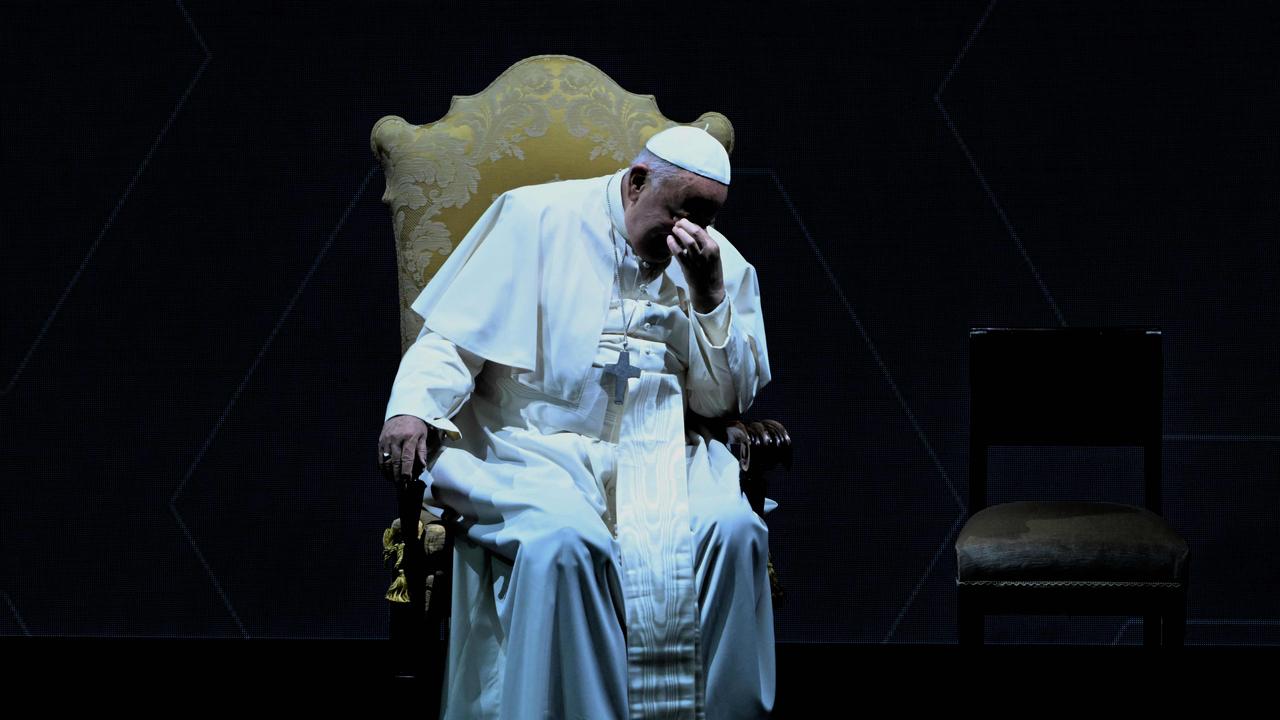
This article is more than
1 year oldPope Francis’ cause of death has been confirmed as it’s revealed he did not die from respiratory issues after a battle with pneumonia.
Pope Francis died of a stroke, causing a coma and “irreversible” heart failure, according to his death certificate released by the Vatican on Monday.
The 88-year-old Catholic leader died on Monday morning, almost a month after having been discharged from five weeks in hospital where he nearly succumbed to double pneumonia.
Francis died in his apartment at the Santa Marta residence in the Vatican. He died of “cerebral stroke, coma, irreversible cardiocirculatory collapse”, the death certificate said.
The pontiff had already been affected by a previous episode of acute respiratory failure when he had double pneumonia in hospital, it added.
He had also suffered from arterial hypertension, multiple bronchiectasis and Type 2 diabetes -- something that was not previously known.
It was signed by the director of health of the Vatican City State, professor Andrea Arcangeli.
Double pneumonia is a lung infection that affects both the lungs, inflaming the air sacs in the lungs, or alveoli, which fill with fluid or pus.
This inflammation makes it hard to breathe and if more segments of the lungs are infected, whether in one lung or both lungs, the disease is likely to be more serious.
Pope Francis had a long history of health problems throughout his life, some dating back to his youth and others developing during his papacy.
When he was 21, he had part of one lung removed due to a severe infection, which is understood to likely have been pneumonia or a lung cyst.
Despite this, Pope Francis is said to have lived a very active life and never let it significantly affect his vitality.
He also suffered from chronic sciatica, a painful nerve condition that often made walking difficult. The condition meant he would sometimes cancel events or be visibly uncomfortable during long ceremonies.

Throughout his life, there were reports that he suffered from mild heart issues, including an irregular heartbeat, though it seemed this was mostly managed without any incidents.
As he reached his late 80s, Pope Francis could be seen using a wheelchair more frequently due to joint problems and knee pain, as he was diagnosed with a torn ligament in the knee and chronic osteoarthritis.

Back in July 2021, he underwent colon surgery to remove part of his intestine due to diverticulitis, a common condition in the elderly that can cause pain and inflammation.
In the Pope’s final years, he experienced recurrent respiratory infections, including bronchitis and pneumonia, which likely ultimately contributed to his death.
He had just left hospital after a 38 day admission.

On Easter Sunday, the Pope made a surprise public appearance in The Vatican, giving his blessings to the crowds just hours before he died on Monday morning.
Despite his previous health issues, he kept a busy schedule until his final weeks.
In September 2024, he carried out a 12-day tour across South-East Asia and Oceania that included visits to Indonesia, Papua New Guinea and Singapore.

The Vatican announced the news in a video statement on Monday, saying stating: “Dear brothers and sisters, with deep sorrow I must announce the death of our Holy Father Francis.
“At 7:35 this morning the Bishop of Rome, Francis, returned to the house of the Father. His whole life was dedicated to the service of the Lord and His Church.”
Cardinal Kevin Farrell, the Vatican camerlengo, continued: “He taught us to live the values of the Gospel with fidelity, courage and universal love, especially in favour of the poorest and most marginalised.
“With immense gratitude for his example as a true disciple of the Lord Jesus, we commend the soul of Pope Francis to the infinite merciful love of the Triune God.”